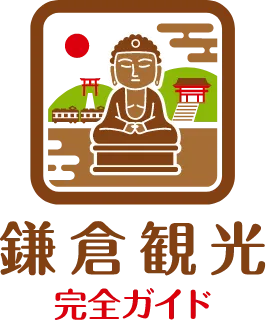Sugimoto-dera Temple (杉本寺)
Discover the History of Sugimoto-dera Temple
Sugimoto-dera Temple is considered the oldest temple in Kamakura, dating back to the early 8th century during the Nara period. It is believed to have been founded by the revered monk Gyoki (行基), and later supported by Fujiwara no Fusasaki (藤原房前) under the wish of Empress Komyo. Esteemed figures such as Ennin (円仁) and Genshin (源信) were also involved in its development. As the first site of the Bando Sanjusankasho pilgrimage, the temple is revered as both “Sugimoto Kannon” and “Okura Kannon.”
Highlights: Scenic Beauty, Architecture, and Natural Features
The temple’s most iconic feature is its moss-covered stone staircase, bordered by white votive flags. On rainy days, the lush green moss glows vividly, creating a dreamlike atmosphere. Though access is now restricted to protect the fragile cultural site, its quiet presence is awe-inspiring.
Within the temple grounds, you’ll find the Kannon-do Hall rebuilt in the late 17th century and a thatched-roof Nio-mon Gate from the mid-18th century. The Kannon-do Hall is designated as a cultural property of Kanagawa Prefecture, and the preservation of the thatched gate has become a community-supported effort due to challenges posed by climate change.
Sacred Significance and Spiritual Heritage
Inside the main hall, three Eleven-Faced Kannon statues attributed to Gyoki, Ennin, and Genshin are enshrined. Two of them are recognized as Important Cultural Properties of Japan. Their rare placement—”Sanzon Doden,” or Three Deities in One Hall—underscores the depth of Kannon worship. While usually hidden from view, these statues are unveiled on the 1st and 18th of each month, with a Goma fire ritual held at 1:30 PM—making these special days for devout visitors.
Omikuji, Goshuin, and Local Legends
One local legend tells of a Kannon statue that escaped a fire by moving under a great cedar tree, inspiring the name “Kannon of the Cedar Origin.” Another story recounts how arrogant riders were thrown off their horses when passing the temple, giving rise to the term “Geba Kannon” (Dismounting Kannon). When its eyes were covered with a priest’s robe, the falling ceased, earning the statue the nickname “Masked Kannon.” These folk tales add depth to the temple’s spiritual allure.
How to Get There from Tosh’s Place (トシズプレイス)
From the area around Kamakura Station, the temple is about 15 minutes away by bus and on foot. If you’re coming from the Hase area, take the Enoden Line to Kamakura Station, then transfer to a local bus. The temple is open year-round from 8:00 AM to 4:30 PM. Early mornings offer a serene atmosphere that enhances your visit.
Best Time to Visit: Seasonal Highlights
The temple offers unique seasonal beauty. Cherry blossoms and camellias bloom in spring, while summer brings delicate rockfoil flowers and hydrangeas. Autumn paints the grounds with red spider lilies and brilliant leaves, and winter reveals sasanqua camellias and early plum blossoms. Late November to mid-December is ideal for fall colors, and moss-covered scenery becomes especially enchanting on rainy days. Early morning visits allow peaceful exploration before the crowds arrive.
Nearby Attractions to Explore on Foot
The area around the temple is ideal for tranquil strolls. Within walking distance are Hokoku-ji Temple (報国寺), famous for its bamboo grove, and Jomyo-ji Temple (浄妙寺), known for its refined rock garden. Extend your walk to include Zuisen-ji Temple (瑞泉寺) and Kamakura-gu Shrine (鎌倉宮), both located along the historic Kanazawa-kaido Road.
Who Should Visit: Find Your Travel Style
The temple is perfect for travelers seeking quiet reflection in a place of profound history and natural harmony. Even those unfamiliar with Buddhism can appreciate its mossy steps and seasonal flora. If you’re staying nearby, such as at Tosh’s Place (トシズプレイス), early morning or late-day visits offer a chance to experience its spiritual charm without the crowds.
Wrap-Up: A Temple of Moss, History, and Serenity
Sugimoto-dera Temple stands as a timeless sanctuary, preserving centuries of devotion since the Nara period. Its moss-covered steps, historic buildings, and seasonal beauty provide both peace and insight. Visiting in the stillness of morning or evening reveals its true essence—making it a must for those seeking a deeper, freer style of travel in Kamakura.
